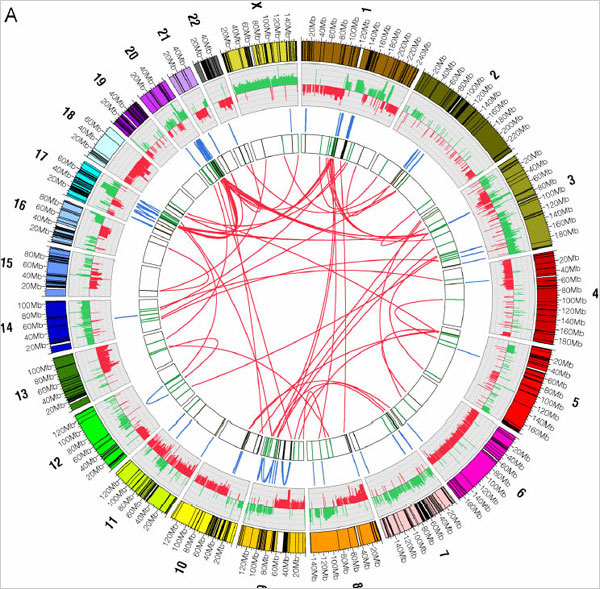These rearrangements may degrade the cell's regulatory systems, especially when a rearrangement cuts a gene in half, or separates it from the regions of DNA that control its activity.
Researchers led by Oliver A. Hampton and Aleksandar Milosavljevic at the Baylor College of Medicine in Houston have now compared the genome of a type of breast cancer cell with that of normal cells. They find 157 rearrangements, they report in the current issue of Genome Research.
The graphic summarizes their results. Round the outer ring are shown the 23 chromosomes of the human genome. The lines in blue, in the third ring, show internal rearrangements, in which a stretch of DNA has been moved from one site to another within the same chromosome. The red lines, in the bull's eye, designate switches of DNA from one chromosome to another.
One of the rearrangements disrupts a gene called RAD51C which is involved in mending serious chromosome breaks, those in which both strands in the DNA are disrupted. The impairment of double strand break repair could be a major cause of all the other rearrangements, the researchers suggest.
http://www.nytimes.com/2008/12/25/science/25visual.html?_r=1&pagewanted=print
